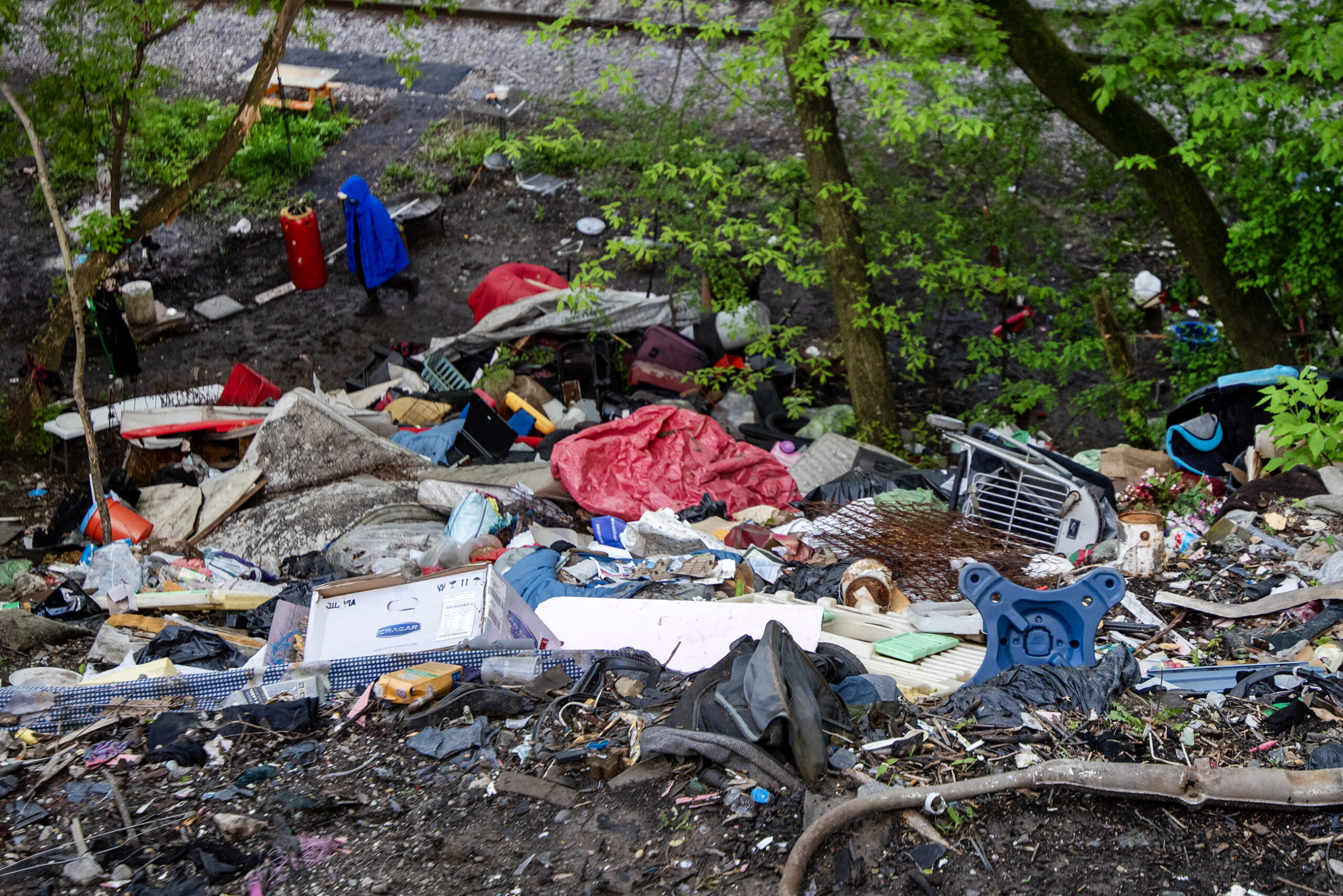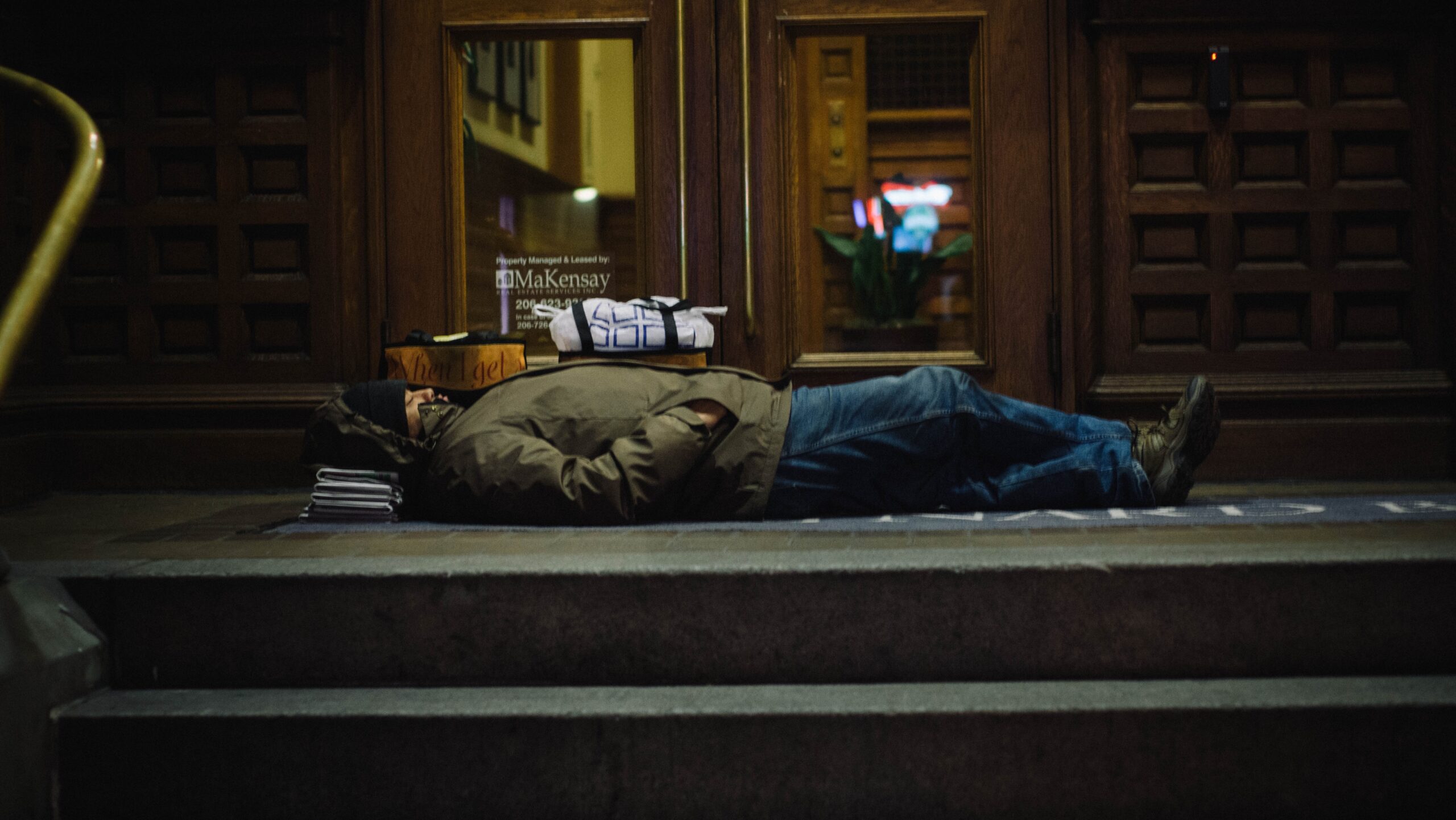In western Wisconsin, a five-year action plan to end homelessness is creating housing opportunities and supportive services.
This year marks the second year in which city, county and community agencies in La Crosse will work together to achieve “functional zero” by 2029 through the Pathways Home plan.
“It means we get more people into housing every month than people who are entering homelessness,” said Brian Sampson, homeless coordinator for the city of La Crosse.
Stay informed on the latest news
Sign up for WPR’s email newsletter.
“There isn’t a 24/7 shelter in the city of La Crosse,” Sampson said. “The Salvation Army shelter is at capacity all the time.”
December data shows 275 people living in the region without shelter.
“We want to come up with a bridge or temporary solution for that surge in shelter beds,” he said.
Sampson told WPR’s “Wisconsin Today” this year’s focus is to end unsheltered homelessness with a temporary emergency shelter and a specialized housing plan.
He said since starting as the city’s first homeless coordinator in 2021, he’s learned it takes a system to get a good hold on homelessness. That includes a formal collaboration with Jim Drees, the county’s first homeless response manager.
“The city has a lot to do with housing, zoning and police response,” Drees told “Wisconsin Today.” “The county is the place where we have supportive services that people need.”
Pathways Home provides permanent, supportive housing solutions
Since the start of the Pathways Home plan, 88 people who once were unhoused now have a place to call home.
Drees and Sampson agree it’s critical for communities like La Crosse to know the name of every person experiencing homelessness.
To provide real-time data, Pathways Home tracks the number of unhoused people on a monthly basis. A standard “Point-In Time” homeless count is commonly used in Wisconsin communities and other states to track the population — but just twice per year.
“We don’t necessarily know the history of people,” Drees said. “Now, we can understand what type of housing they might need to be successful.”
Sampson said more frequent data collection allows the city and county to make recommendations for federal funding to support the homeless population.
He said the La Crosse City Council approved funding two additional housing projects through the American Rescue Plan Act. Karuna is set to receive $300,000, while Couleecap will get more than $800,000.
The projects will add 26 housing units by 2026, according to Sampson.
“This was identified as helpful units that our community needs,” he said.
Last week’s federal grant freeze by the Trump Administration concerned Sampson. But the White House quickly rescinded the move.
Meanwhile, additional housing units are under construction in La Crosse. This coming summer, a four-story apartment complex is expected to open 62 units of affordable housing. This fall, the county’s Hillview Health Care Center will offer 10 units.
Action plan seeks to strengthen homeless prevention, hires additional support
Sampson said an additional focus of this year’s Pathways Home plan is to strengthen homeless prevention. He said the first step is to determine how to identify people who may be at risk of losing their home.
“How can we help them stay in housing?” he asked. “The earlier we can intervene, the better.”
While leaders discover solutions, La Crosse has case managers working with the homeless population.
“If someone is experiencing homelessness, we have someone readily available to help them search for housing, help them fill out applications,” Sampson said. “Then, connect them with any ongoing support.”
Last year, La Crosse County launched a specialized unit with three social workers, to meet people’s needs and provide help navigating housing options.
To provide further support, the 2025 county budget supports funding three additional social workers and three peer support specialists.
Drees said these new peer positions can prevent people from becoming homeless because these people have lived the experience.
“They can connect to this population, build trust and help people maintain their housing,” Drees said.
For other communities looking to address local issues surrounding homelessness, he said people should analyze similarly sized cities to theirs in Wisconsin and across the country.
“This is a solvable problem if you coordinate your effort, your resources, and stay focused on the challenge, ” Drees said. “Be willing to invest in it.”
Wisconsin Public Radio, © Copyright 2025, Board of Regents of the University of Wisconsin System and Wisconsin Educational Communications Board.




